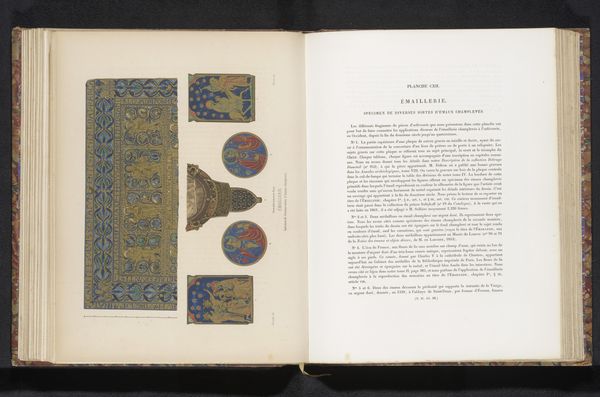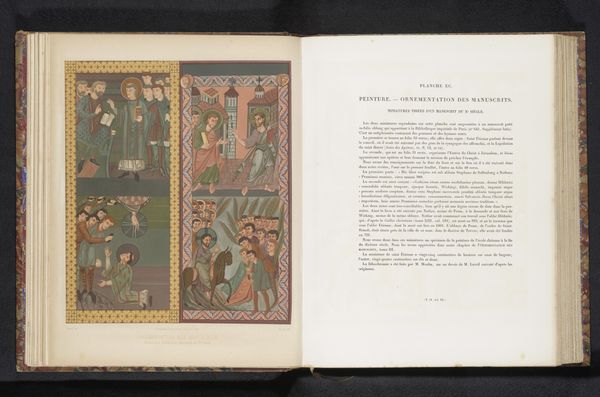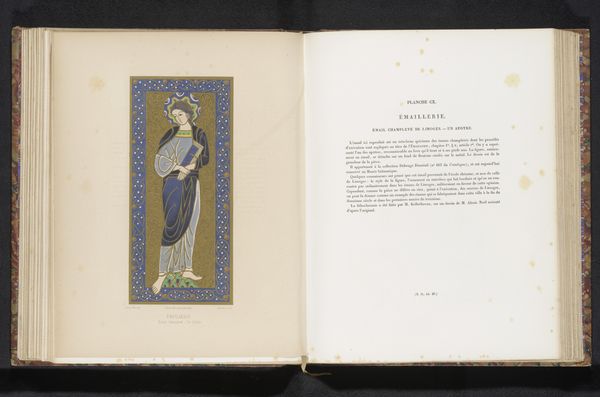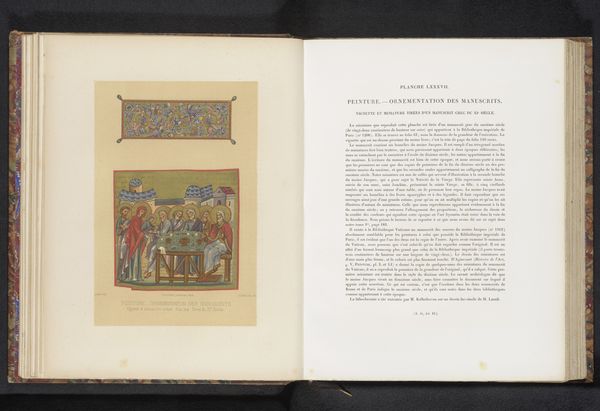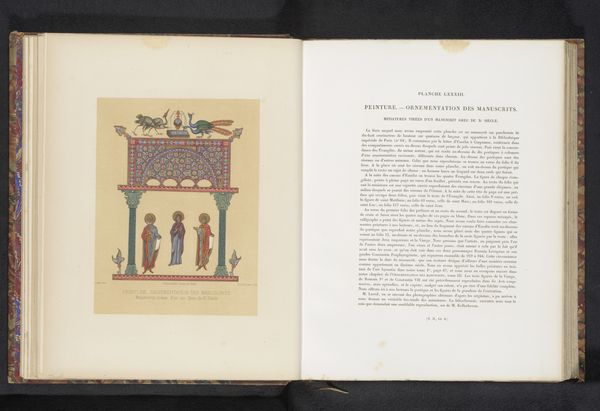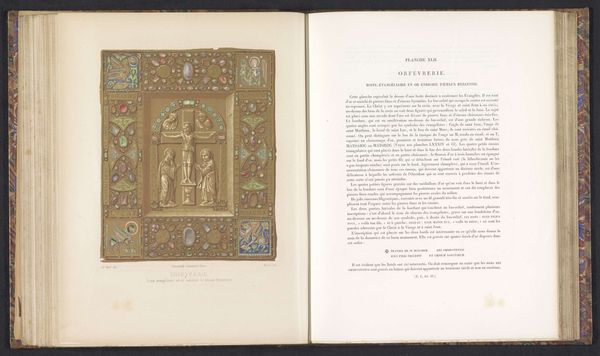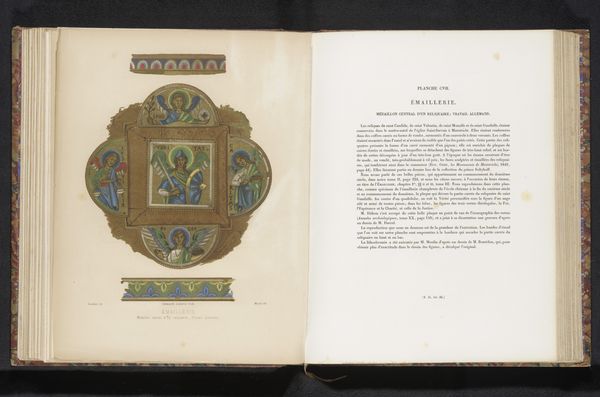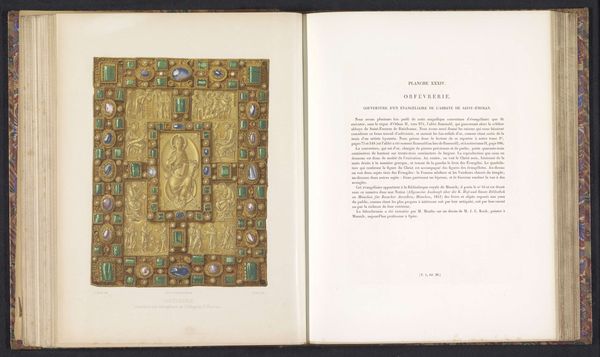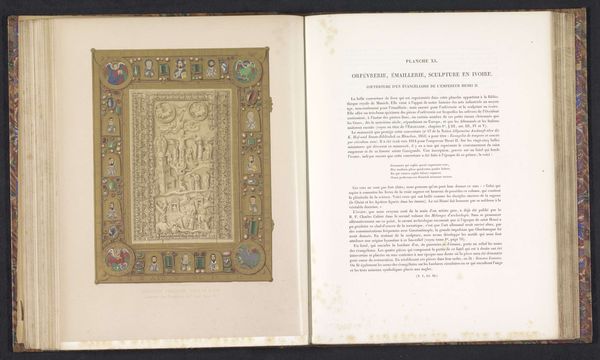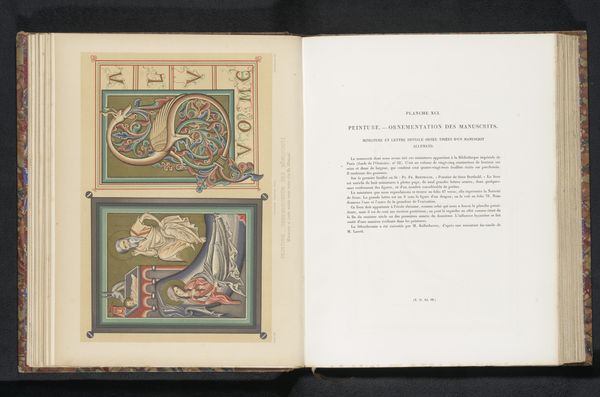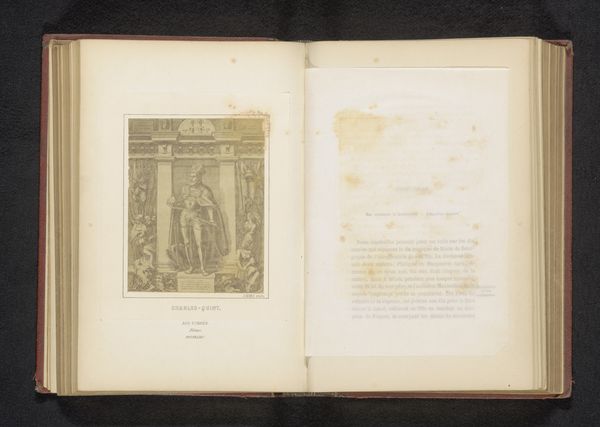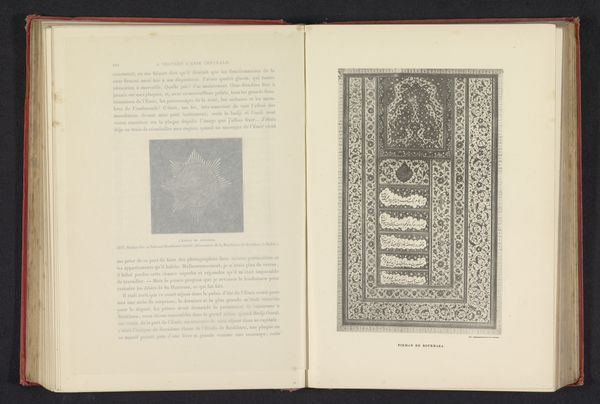
drawing, coloured-pencil
#
portrait
#
drawing
#
byzantine-art
#
coloured-pencil
#
figuration
#
coloured pencil
#
history-painting
Dimensions: height 230 mm, width 207 mm
Copyright: Rijks Museum: Open Domain
Curator: Here we have Franz Kellerhoven’s "Reproductie van een ontwerp met de heilige Theodorus," a colored-pencil drawing, dating from before 1864. Editor: My eye is immediately drawn to the ornate detail and intense, symbolic colour. There is something reverential but also martial about this image. Curator: That makes perfect sense. This work appears to be situated within a larger context of a late revival of interest in Byzantine art, which we can view as arising from political motivations tied to nationalistic projects emerging throughout 19th century Europe. Byzantine art offered a usable past, both religious and aesthetic, for new political ideologies. Editor: Yes, that elaborate goldwork outlining every form calls to mind earlier, powerful traditions. I see the symbolic intent – the horse represents not just physical power but also divine strength; the halo indicates sainthood, which connects Saint Theodore to both earthly and divine realms. I'm struck by the controlled, almost geometric design; each shape seems laden with symbolic weight. Curator: I appreciate that point on the use of geometric design and how that relates to larger efforts to recapture the look and feel of previous forms. Keep in mind, this isn't exactly an original icon, it is a “reproductie” as the title implies. Thus, Kellerhoven’s choices as an artist take on more meaning when considering the work as both an homage and a reimagining based on new demands. Editor: It begs the question – who was Kellerhoven envisioning as the consumer for these drawings? Was it another artist, a collector, a scholar of religious imagery? What kind of cultural work were they hoping to perform through possessing it? Curator: Those are key considerations. How this imagery, rooted in earlier periods, can become part of something totally new – in both aesthetic and social meaning – highlights the crucial role played by visual representations of power in political and social life. Editor: Indeed. Thinking about the visual languages and cultural memory woven into this artwork certainly expands our appreciation, going beyond aesthetic assessment to social reflection.
Comments
No comments
Be the first to comment and join the conversation on the ultimate creative platform.
